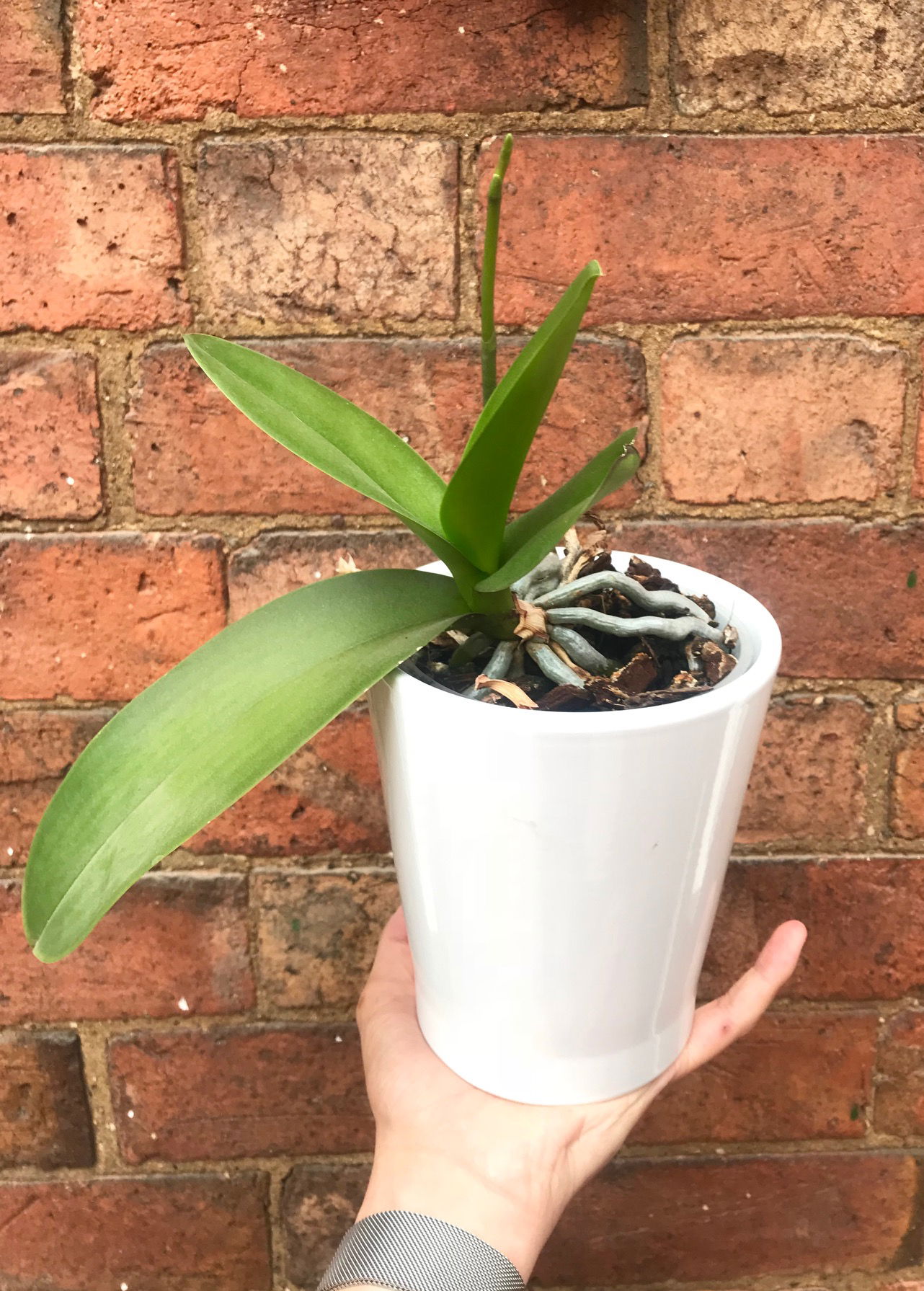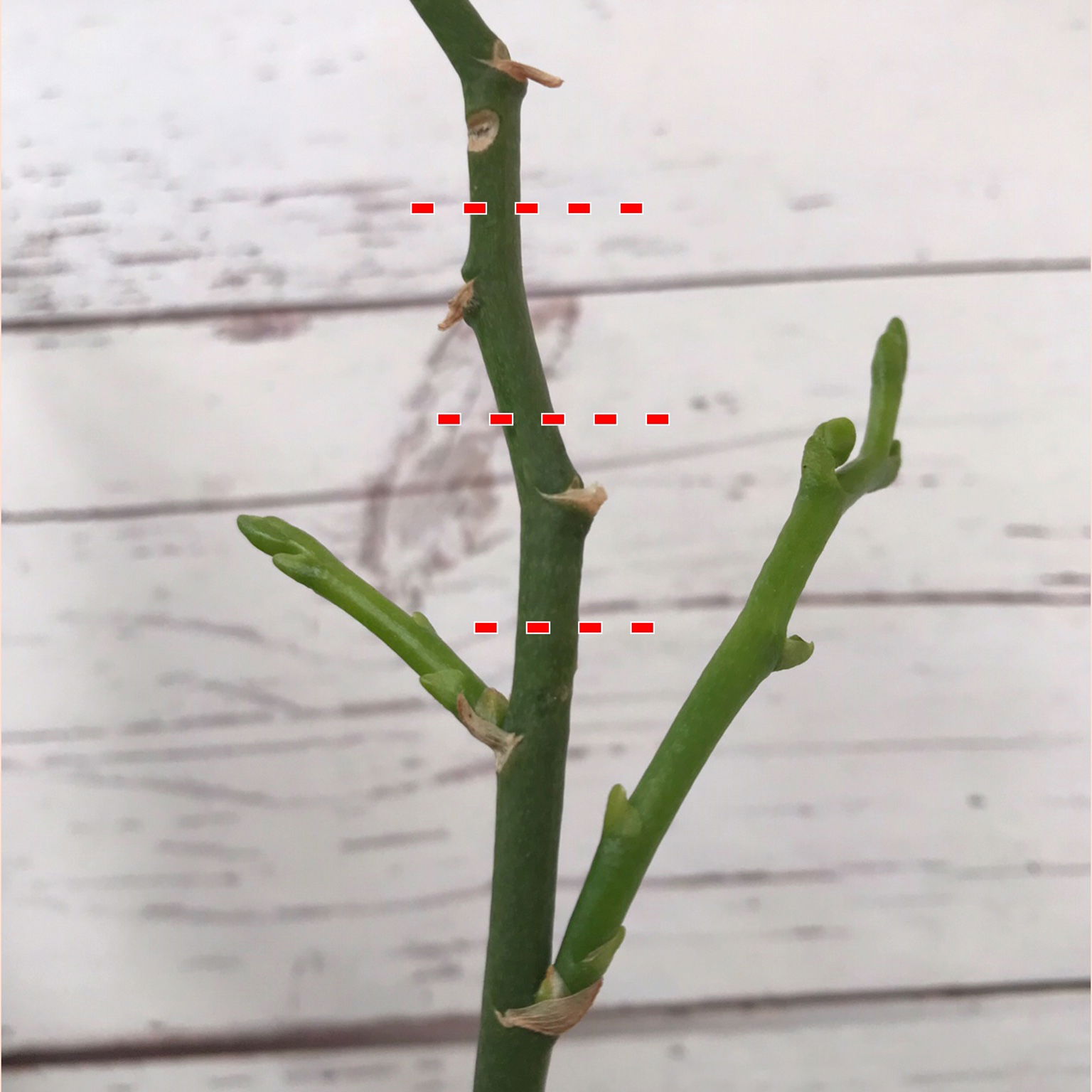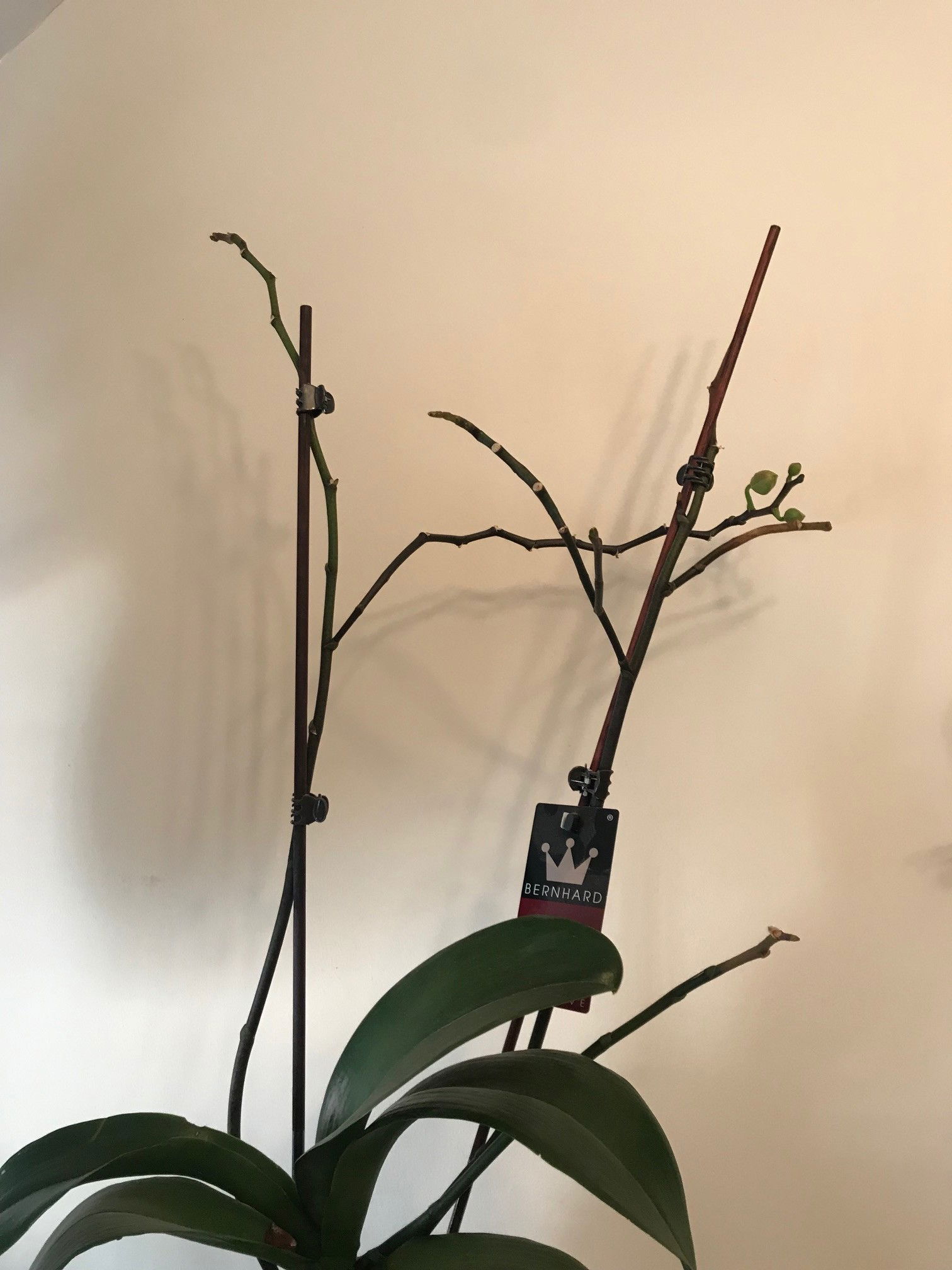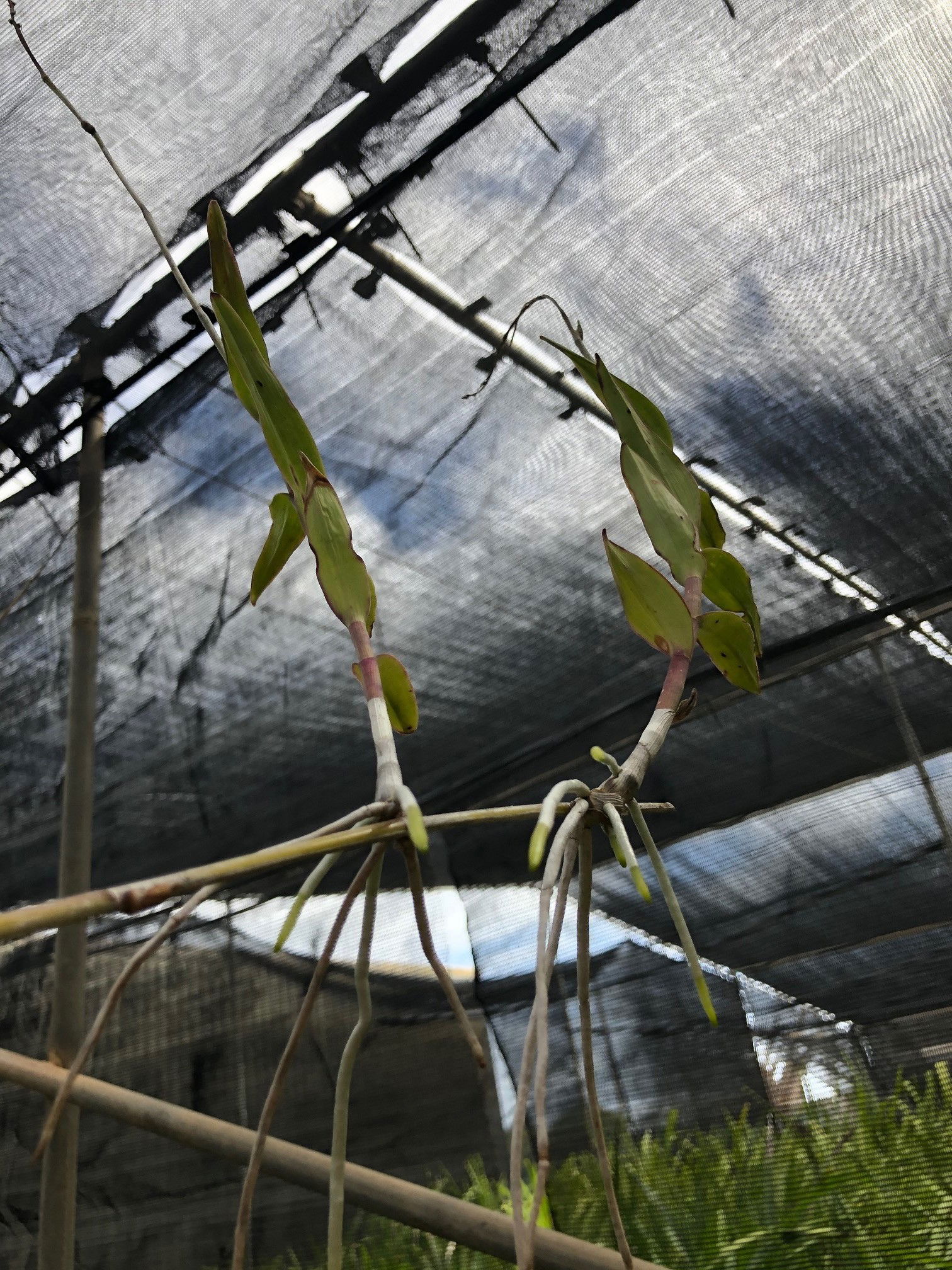
Phalaenopsis amabilis
Contents
- How to Achieve Annual Flowers
- Prolonging Blooms
- Sudden Flower Loss
- Pruning the Stalk
1. How to Achieve Annual Flowers
Orchids can flower at any given time of the year but are most likely to bud from late winter onwards. As ukhouseplants been challenged many times on this subject, we've created an acronym to help you through this process - SHORT. The combination of drying soil, cooler temperatures and dark nights will contribute to a better chance of flowers within the next couple of weeks. Repotting isn't mandatory, but instead might hurt the chances because of transplant shock and stress.
N. B. - The following steps can be taken at any given point of the year, but is most successful during the autumn and winter months for a bloom within the next few weeks. All species of Orchid can be subjected to this treatment, including Cattleya, Cambria, Cymbidiums, Dendrobium, Epidendrum, Miltonia, Ludisia, Paphiopedilum, Phalaenopsis, etc.
Sunlight
Provide a bright, indirect location that offers a good level of natural lighting. Darker settings will significantly reduce the chance of flowers.
Hydration
Reduce watering so that the soil or bark becomes fully dry for a week, to put pressure on the specimen for budding. With Moth Orchids (Phalaenopsis), you'll know when to irrigate as its roots will sport a silver appearance.
Occasional Feeds
One or two feeds using an Orchid-labelled is all that is needed for supplementation, as too nutritious soil will reduce the chance of blooms.
Reduce Everything
This one is a reminder to reduce everything - especially the temperature.
Temperature
Reduce the temperature by around 5℃ or place in a room which is within 15℃ - 18℃ (59 - 65℉). As most houseplants are sensitive to temperature change, we can't empathise how important this is to replicate their dormancy period. If all of the steps are fulfilled, an established specimen could produce beautiful blooms within the next few weeks, lasting up to two months!
2. Prolonging Blooms
Regular Hydrations - A well-hydrated Orchid will reward you with more reliable flowers. When it's time for irrigation, do so over the sink and away from the decorative pot as water-logging is a definite no-no. Although fresh bottled water or rainwater is best, allowing tap water to sit for 24hrs will enable the temperature to increase, and the chloride to evaporate, thus becoming a good source of water. Avoid the use of cold water as it'll lead to stress and potential flower loss.
Humidity - A steady, reliable level of humidity is mandatory for long-lasting blooms. In fact, ukhouseplants have documented that the introduction of a Pebble/Humidity Tray can lengthen an individual flower's life by up to fourteen days! Bathrooms aren't wholly necessary to provide a humid environment and instead may antagonise the specimen due to the inconsistent fluctuations.
Location - A bright, indirect location will provide the best rate of photosynthesis, which in turn will improve the plant's wellbeing. Dark locations where a newspaper can't be read without the need for artificial light should be avoided at all costs.
Fertilisation - Regular fertilisation is essential; feed fortnightly using an Orchid-labelled feed during the flowering process, and monthly during the dormancy period in the autumn and winter. Most species of Orchids have open-stomata, meaning that they can absorb airborne moisture and nutrients from its surroundings. With this in mind, purchasing a leaf-mist' will benefit the plant far better than via the roots, as only the tips can absorb nutrients.
Check for pests - most notably mealybugs. These unwanted white shelled inhabitants will typically sleep and lay their eggs in the flower's intricate body, as it'll protect them from predators (ladybirds etc.) and the direct sun. Infestations can quickly spread if untreated, wreaking havoc in the likes of flower loss and a general decline in health.
3. Sudden Flower Loss
A sudden decline of flowers can be caused by a number of different issues, ranging from pest damage, water-related abuse and improper light levels.
The first issue for flower decline is pests. Most infestations would have started back at the local garden centre or store, so destroying the infestation as quickly as possible is paramount. If you'd like to know more about how to identify and address an infestation, click on this link.
Another reason could be to do with your watering regime. Only irrigate an Orchid once the top few inches dry out, as over-watering is a common and serious threat among growers. The roots of a Moth Orchid (Phalaenopsis), should become silver again before another water - if it's green, it's still sufficiently hydrated. Root rot tends to be the biggest issue among cultivation, with too moist soil and waterlogged conditions being the usual cause. For those who have Orchids with rotten brown roots, learn about how to deal with the issue, here. The use of cold water can also reduce the flowers' life span, constantly stressing the root system. Help the situation by allowing the water to reach room temperature before introducing it to the plant.
An improper location in the house, is another key reason for a poor show of flowers. Although Orchids are epiphytic, meaning that they grow on jungle trees in shady locations, the high risk of over-watering and lack of natural light can easily result in an unhappy bloom. We'd recommend presenting a location that offers an hour of morning or evening winter sun while avoiding direct sunlight all together for the rest of the year. As it'll be located in a brighter spot, be sure to keep on top of waters to avoid dehydration.
Environmental shock could be the final culprit of a poor showing of colour. Most plants like to be situated in a location that'll rarely change, as they'll get used to the light, humidity levels and the overall growing conditions. A recently bought Orchid would have had to accustom to the environment of the nursery, then a lorry, then a new garden centre and finally into your home. Would you become stressed about the rapid temperature and humidity changes? Improve the situation by increasing the surrounding moisture with a Humidity Tray and being on top of waters. If all of the flowers have dropped off, but the shaft itself is still green and firm, move onto the following section.
4. Pruning the Stalk
N. B. This section is tailored for Moth Orchids (Phalaenopsis), Dendrobium phalaenopsis, Cambria, Miltonia & Oncidium.
 Phaelanopsis celebensis
Phaelanopsis celebensis
When the flowers have elapsed (for whatever reason), there's a cheeky way to promote a new show of blooms. Pruning the shaft back to a non-flowering node will signal the Orchid to send out a new shoot. Although the new growth may not be as prolific as its predecessor, it's a bloom nonetheless. While using a clean knife or pair of scissors, make a precise incision around an inch above a non-flowered node, at a slight angle. Never directly cut into the centre of a node as this will destroy both it and the chance of growth from this particular section. Maintain a steady environment with regular waters and feeds and wait for the new growth. Although it'll take several weeks to see development, a new show of flowers should be on its way!
 Leaving the vacant flower stalks on the mother plant may develop vegetative offsets that you can separate once matured.
Leaving the vacant flower stalks on the mother plant may develop vegetative offsets that you can separate once matured.
4b. 'Keiki' Cuttings
Appropriate for Moth Orchids (Phalaenopsis), Epidendrums & Dendrobium phalaenopsis.
 Epidendrum radicans
Epidendrum radicans
If you decide to leave the stalks as they are (bare), you may be awarded a 'Keiki' offset. These little beauties are asexual growths that'll grow from a node and can be propagated once it has a few inches of roots. Be patient, though, as the development of a new root system can take up to fifteen months in some cases! Click on the 'Back' button and scroll to the desired Orchid for more information on Keiki propagation.
Book a 1-to-1 Call with THE HOUSEPLANT DOCTOR™
If you need further advice with your houseplants, book an advice call with ukhouseplants' friendly and expert writer today! This can be done via a video or audio call on most apps, including Facebook, FaceTime & Skype. A ten-minute call costs £5.99 (US$7), or £15.99 for thirty minutes. You can ask multiple questions, including queries on plants, pests, terrariums, repotting advice and anything in between. Please consider supporting this service to keep ukhouseplants thriving!